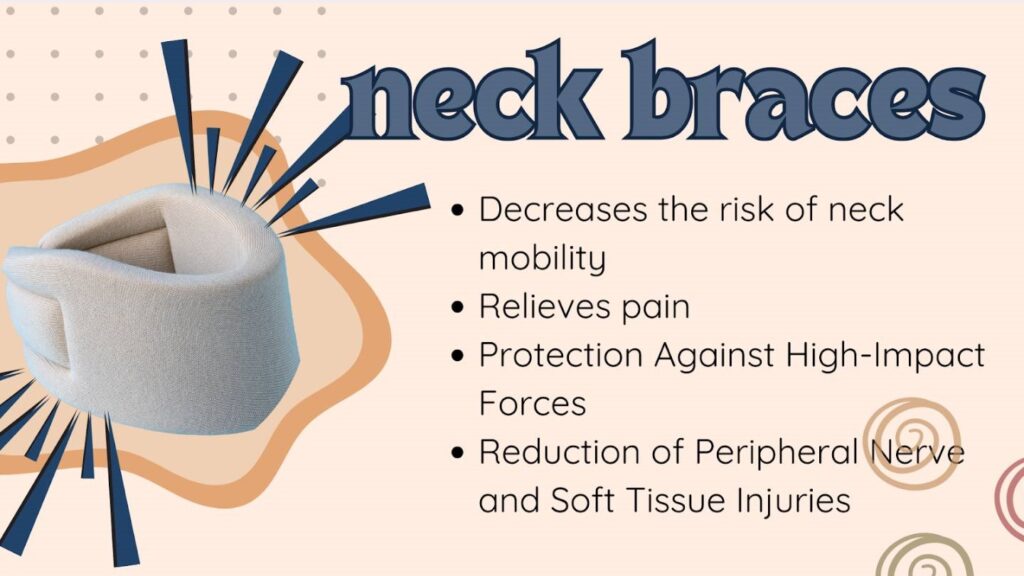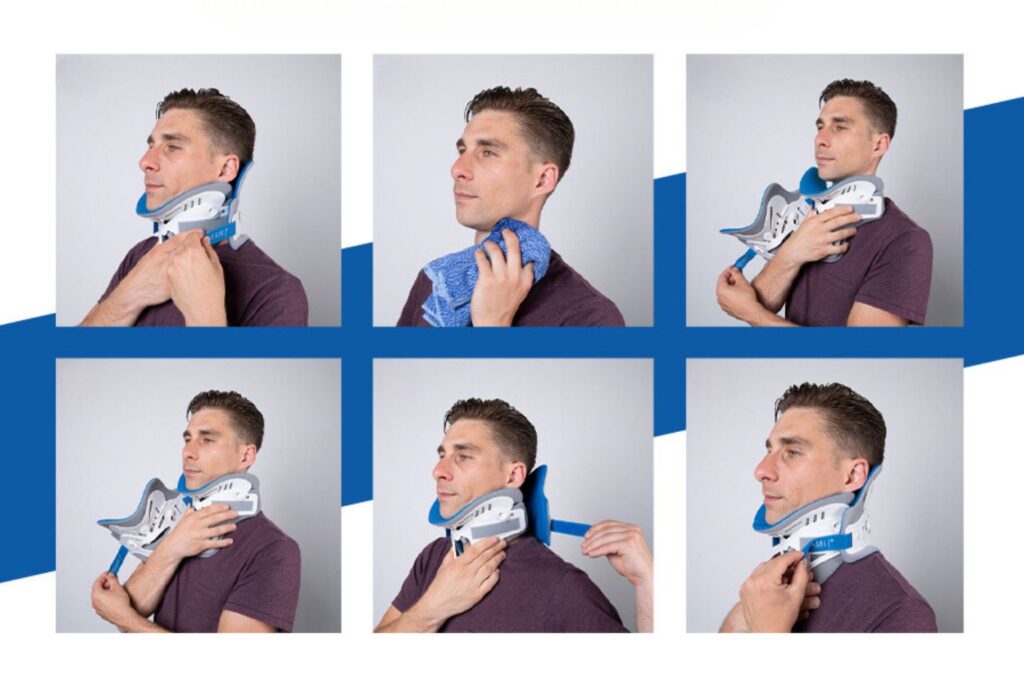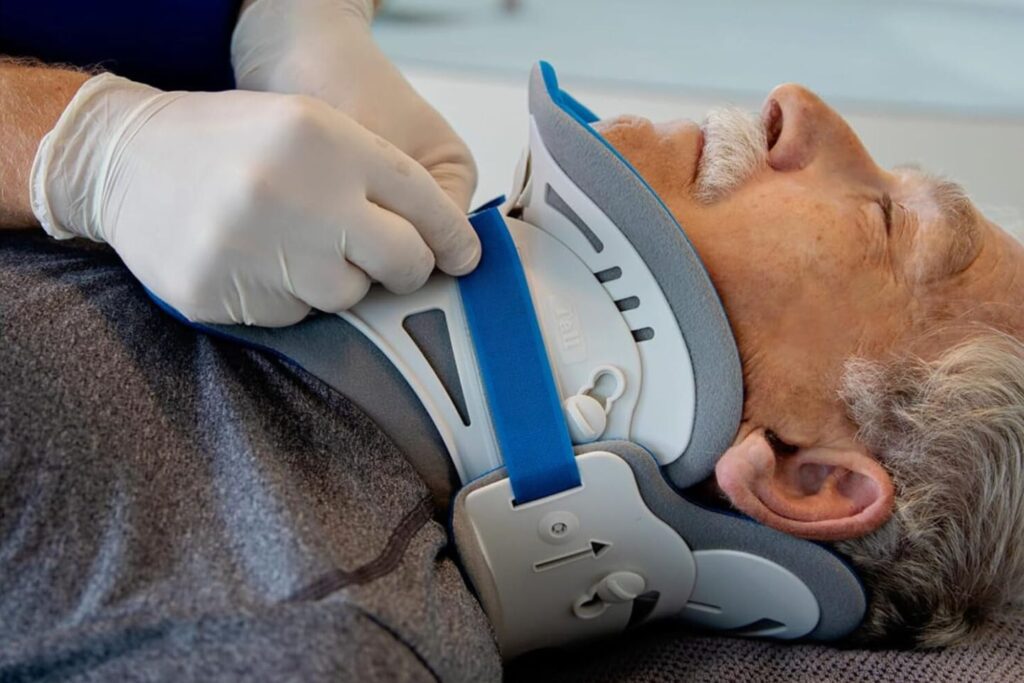A hospital neck brace is a medical device designed to support your neck and limit motion after an injury or surgery. When you experience trauma, such as whiplash, or when certain conditions necessitate reduced movement to facilitate healing, a neck brace may be prescribed. These devices are crucial for stabilizing your cervical spine and can vary in design and functionality based on your specific needs.


Overview of Hospital Neck Braces
Hospital neck braces serve a critical role in managing various cervical conditions by immobilizing the neck to facilitate healing and prevent further injury.
Types of Neck Braces with Product recommendations
Hospital neck braces come in a variety of designs, each suited for different levels of support and conditions. The soft collar is commonly used for minor injuries and provides gentle support. For more significant support, a Philadelphia collar effectively immobilizes the neck. The Miami J collar is another type often used post-surgery or after serious trauma to provide robust stabilization. Below are some neck brace recommendations:
Soft Collar – Soft Neck Brace by Vive:
- PAIN RELIEF AND INJURY SUPPORT: This 3" thick cervical collar supports the jaw and neck while limiting mobility to relieve pain and pressure in the spine. Realigning and stabilizing vertebrae, the foam collar can be worn throughout the day and while sleeping for superior support and pain relief. The non-rigid neck brace will also relieve headaches caused by cervical strains and sprains. Useful for post-operative rehabilitation and injury support.
- EASY TO PUT ON AND FITS MOST NECKS: Simply wrap the neck brace around the neck and secure with the integrated fastener. The integrated fastening strap allows the brace to be easily adjusted for a precise, personalized fit. The neck brace accommodates neck circumferences ranging from 15”-20.5”.
- CONTOURED FOR COMFORT: Ergonomically designed, the plush foam cushions the jaw and neck for a comfortable, supportive fit. The foam is contoured to closely fit the chin and jaw for maximum comfort.
This brace is designed to provide comfortable support for neck injuries, whiplash, and cervical spine issues. It’s adjustable, made from breathable materials, and offers a good balance between support and comfort.
| What We Like: | What We Don’t Like: |
Soft and comfortable material for extended wear Adjustable straps for a customizable fit Affordable option compared to some other neck braces | May provide less support compared to rigid collars Limited effectiveness for severe neck injuries Some users may find it less durable over time |
Miami J collar – Ossur Miami J Cervical Neck Collar:
- STANDARD SIZE: Fits most body frames comfortably, providing effective immobilization for cervical injuries and trauma.
- PRESSURE POINT MINIMIZATION: Engineered to reduce pressure on key areas like the chin, occiput, and trapezius.
- ENHANCED PADDING: Sorbatex padding offers superior comfort and pain relief, suitable for long-term use.
This collar offers unmatched comfort and durability, making it a good choice for postoperative recovery. They provide patients to maintain a proper alignment and restrict unnecessary cervical spine movement that could cause further injury. This Miami J collar is adjustable, so it is a perfect fit for your neck. It’s also lightweight, making it easier to move around without risking your safety. The Ossur Miami J Collar delivers reliable support for enhanced healing and improved patient outcomes.
| What We Like: | What We Don’t Like: |
Effective support for cervical spine injuries Customizable fit for comfort Reputable brand known for quality | Limited neck mobility Adjustment period required Higher cost than some alternatives |
Philadelphia collar – FUTURO Cervical Collar
- Provides moderate support to your injured neck
- Intended to help provide relief from injuries like whiplash, pinched nerves, mild neck stiffness
- Chin strap adjusts the collar height for a personalized fit
Introducing the Futuro Cervical Collar from 3M, a trusted name in orthopedic care. Designed with adjustable materials, it ensures a tailored fit for maximum comfort and stability. Ideal for addressing strains, sprains, or post-surgery recovery, it offers essential support. Whether worn during daily activities or incorporated into a rehabilitation routine, this collar provides dependable support, empowering individuals to move with ease and confidence.
| What We Like: | What We Don’t Like: |
Adjustable design for personalized fit Provides stability and support for the neck Trusted brand known for quality orthopedic products | May feel bulky for some users Limited range of motion during wear Higher price compared to some alternatives |
Indications for Use
Your doctor may recommend using a neck brace for several reasons, including recovery from surgery, stabilization for a recent injury like whiplash, or chronic conditions that affect cervical stability. Braces are imperative when restricting movement to allow the natural healing process or to prevent further damage to cervical structures.
Components and Design
A typical neck brace is composed of materials that provide both comfort and support, often featuring a combination of soft foam and rigid plastic. The interior lining is meant to cushion your neck, while the hard outer shell ensures the stability of your cervical spine. These components are adjustable to ensure an optimal fit, as proper use is crucial for the effectiveness of the brace.
Application Procedures
When applying a hospital neck brace, precision in measuring, fitting, and ongoing adjustments are critical for the efficacy and comfort of the device.
Measuring for Fit
To ensure effective support and comfort, accurately measure your neck’s circumference and length. Position a flexible tape measure around the neck, noting the measurement at the throat’s base. For length, measure from the jaw’s base down to the collarbone.
Fitting a Neck Brace
Begin by:
- Opening the brace — Separate the Velcro straps and lay the brace flat.
- Positioning the brace — Place the back half of the collar against your neck, and align the front part under your chin, ensuring it supports the jawbone without applying excessive pressure.
- Closing the brace — Secure the Velcro straps snugly, making sure the brace is comfortably tight without restricting breathing or circulation.
Adjustment and Maintenance
For optimal support:
- Check the fit daily, making minor adjustments to the Velcro straps to accommodate any changes in swelling or comfort needs.
- Maintain the integrity of the collar by cleaning it according to the manufacturer’s instructions, which will typically involve wiping it down with soap and water.
Keep these components in mind for the duration of your time using the neck brace to ensure its effectiveness and your comfort.
Clinical Considerations


In this section, you will find important information regarding assessing injuries that may require a neck brace, guidelines about how long the brace should be worn, and what complications to monitor for during usage.
Injury Assessment and Bracing
When you have sustained a neck injury, a thorough medical evaluation is crucial before a medical grade neck brace is assigned. Your healthcare provider will determine whether your injury is bone-related, ligamentous, or muscular, as well as ascertain the severity of the injury to decide on the appropriate type and fit of the neck brace.
Guidelines for Neck Brace Fitting:
- Snug Fit: Ensure the brace fits snugly but does not constrict blood flow.
- Alignment: The chin and occiput should be well-supported for optimal alignment.
- Skin Integrity: Check the skin under the brace daily for any signs of irritation or breakdown.
Duration of Use
Your doctor will prescribe the duration of neck brace usage based on the type and severity of your injury. Compliance with wearing the brace for the recommended time frame is vital for successful healing. It’s common for soft tissue injuries to require bracing for a shorter period compared to fractures or post-operative care. Studies suggest that having it on for too long renders it useless since it won’t do you any good. So follow your doctor’s recommended time frame to maximize its benefit and heal properly.
Typical Bracing Time Frames:
- Soft Tissue Injury: 1-4 weeks
- Stable Fracture: Up to 8 weeks
- Post-surgery: As advised by your surgeon
Monitoring for Complications
While wearing a neck brace, you must remain observant of potential complications. Follow-up appointments are essential for ongoing assessment and adjustment of the brace as needed.
Checklist for Complication Monitoring:
- Discomfort or Pain: Persistent or increased pain may indicate improper fit or an underlying issue.
- Reduced Mobility: A decrease in mobility beyond expected limitations should be reported.
- Skin Issues: Redness, sores, or signs of infection at contact points need immediate attention.
Regular communication with your healthcare provider will help address any complications promptly.
Care and Maintenance


Proper care and maintenance of a hospital neck brace are crucial for ensuring both its effectiveness and comfort during use. A consistent routine can prevent skin irritation and ensure the brace provides the necessary support.
Cleaning and Hygiene
To maintain cleanliness, routinely wash the skin that comes in contact with the brace using mild soap and water. Always dry the area thoroughly. For the brace itself, follow the manufacturer’s cleaning guidelines, which usually recommend wiping it down with a mild detergent or using specially provided cleaning wipes.
- After every use: Clean skin and check for any redness or sores.
- Weekly: Clean the brace as per the cleaning instructions provided.
Regular Inspection
Inspect your neck brace regularly for signs of wear and tear. Look for:
- Cracks or stress marks in the plastic.
- Worn out or frayed Velcro straps.
- Changes in the fit or stability of the brace.
If you notice any of these issues, contact your healthcare provider to ensure your brace is functioning properly.
Replacement Schedules
Establish a replacement schedule based on your healthcare provider’s recommendations and the manufacturer’s durability claims. Typically:
- Velcro straps might need replacement every 1-3 months, depending on daily wear.
- Entire braces generally have a longer life but should be replaced if they show significant wear or no longer fit correctly due to changes in your neck or weight.
Frequently Asked Questions
When considering a neck brace for health reasons, you may have concerns about its use, selection, and effects. This section addresses common inquiries to help you make informed decisions.
What are the possible side effects of wearing a cervical collar?
Wearing a cervical collar can occasionally lead to skin breakdown, discomfort, and stiffness in your neck muscles if used for prolonged periods without medical advice. Ensure regular check-ups to mitigate these side effects.
What should one consider when choosing a neck brace for cervical spondylosis?
Selecting a neck brace should be based on the severity of your cervical spondylosis. A brace offering the required support while allowing mobility is often recommended. Consult with a healthcare professional to choose the appropriate neck brace.
For how long is it advisable to wear a neck brace?
Your doctor will recommend the duration for which you should wear a neck brace, often depending on the type of injury or surgery you’ve had. Typically, it might be for a few weeks, but it is essential to follow the instructions provided to avoid complications.
Which neck brace is recommended for managing neck pain effectively?
For effective pain management, a soft cervical collar is commonly used as it helps in lifting the weight of the skull off tender neck tissues, easing discomfort. However, the choice of neck brace should be based on the cause and intensity of the neck pain.
Under what circumstances is a neck brace medically recommended?
A neck brace is medically recommended post-surgery for cervical spine injuries and cervical spondylosis, and to aid recovery from whiplash injuries. They effectively immobilize the neck, aid the healing process, and prevent further injury.
Why do emergency responders apply a neck brace at accident scenes?
Emergency responders apply a neck brace at accident scenes to immobilize the neck. This is crucial to prevent any potential spinal cord injury from worsening before a thorough medical evaluation can be conducted.
Expert Support for Personal Injury Claims?
Ready to take action after an accident? The Personal Injury Center is here to guide you. Access top-tier personal injury lawyers who specialize in advocating for accident victims like you. Don’t face the legal process alone. Connect with the expertise you need to pursue your rightful compensation. Reach out today and let’s start building your case together.
Disclaimer: Last update on 2024-07-27 / Affiliate links / Images from Amazon Product Advertising API.
This content is provided solely for educational reasons and should not be seen as medical guidance. It’s important to consult with a healthcare expert prior to making any changes to your health regimen, including dietary adjustments or the use of supplements.
Pages on this website may contain affiliate links. As an Amazon Associate, we receive a commission from qualifying purchases. This commission is at no extra cost to you.



